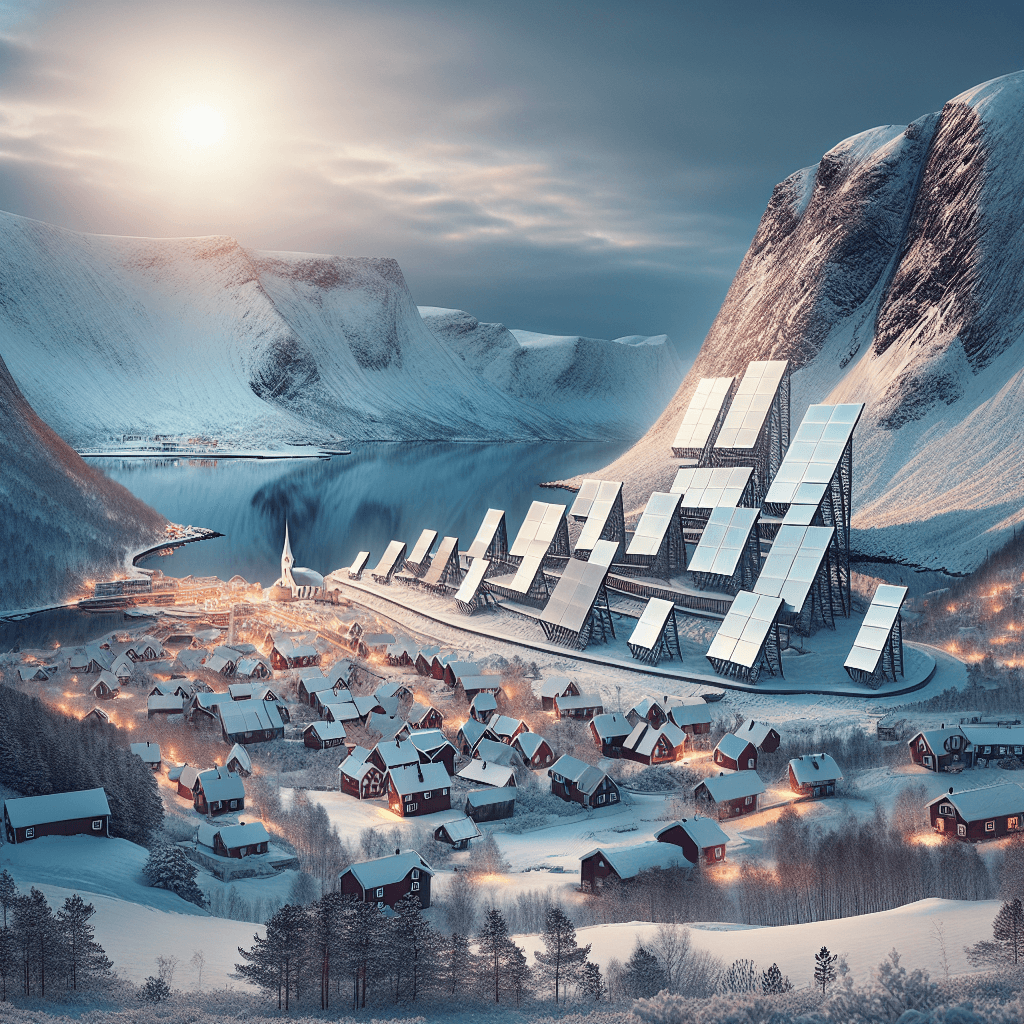Why did a Norwegian town install giant mirrors on a mountainside to reflect sunlight
Trapped in a mountain's shadow for six months of the year, this town took an audacious step to fight the darkness, installing giant mirrors on a mountainside to literally bend sunlight back into their lives.


Too Long; Didn't Read
TLDR: The Norwegian town of Rjukan sits in a deep valley and gets no direct sunlight for six months a year. To combat the winter darkness, they installed giant, computer-controlled mirrors on the mountainside to track the sun and reflect a beam of light down into the town square for residents.
Blog Post Title: The Sun Mirrors of Rjukan: Why a Norwegian Town Installed Giant Mirrors on a Mountainside
Introduction
Imagine living in a place where, for six months of the year, the sun never reaches your town square. This isn't science fiction; it's the reality for the residents of Rjukan, a small industrial town nestled deep within a Norwegian valley. The towering mountains that surround it create a breathtaking landscape, but they also cast a long shadow, blocking all direct sunlight from September to March. Faced with this unique challenge, the town implemented a brilliant and seemingly futuristic solution: installing giant mirrors on a mountainside. This blog post explores the fascinating story behind Rjukan's "solspeil" (sun mirror), delving into the historical context, the ingenious technology, and the profound impact this project has had on the community.
Main Content
A Valley of Darkness: Rjukan's Geographical Challenge
The town of Rjukan lies in the bottom of a narrow east-west valley in the Telemark region of Norway. Its location is both a blessing and a curse. The valley was chosen in the early 20th century by the famed industrialist Sam Eyde as the perfect site for a nitrate plant, harnessing the immense power of the Rjukanfossen waterfall for hydroelectricity.
While this location fueled industrial growth, it came with a significant downside. The steep mountainsides, particularly the majestic Gaustatoppen, completely obstruct the low-lying winter sun. For half the year, the town square and much of the community are shrouded in constant shade, a phenomenon that can have a significant impact on residents' well-being and mental health.
The "Solspeil": A Century-Old Dream
The idea of bringing the sun down to the people of Rjukan is not new. In fact, it was the town's founder, Sam Eyde, who first proposed the concept of a "solspeil" back in 1913. He understood the psychological toll of the long, dark winters and envisioned a system of mirrors to redirect sunlight into his new town.
However, the technology to achieve such a feat was not available a century ago. As a more practical, albeit less direct, solution, Eyde's company funded the construction of the Krossobanen cable car in 1928. This gondola lift, still in operation today, was built to transport residents up the mountainside for a few precious hours of winter sun. While it provided temporary relief, the dream of bringing the sun to the town, not the people to the sun, persisted for generations.
From Concept to Reality: The Technology Behind the Mirrors
It took exactly 100 years for Sam Eyde's vision to become a reality. In 2013, with the help of modern technology and a local artist named Martin Andersen who championed the project, the sun mirrors were finally installed. The system is a marvel of engineering:
- Heliostats: The installation consists of three massive, computer-controlled mirrors, known as heliostats.
- Strategic Placement: These mirrors are positioned on a mountain ledge approximately 450 meters (1,476 feet) above the town.
- Tracking the Sun: Each heliostat is equipped with sensors and is powered by solar and wind energy. A central computer tracks the sun's trajectory across the sky, constantly adjusting the angle and tilt of the mirrors to capture the sunlight.
- A Beam of Light: The mirrors work in unison to reflect a single, concentrated beam of light down into the valley, illuminating an elliptical area of about 600 square meters (6,500 square feet) in Rjukan's central town square.
The system is fully automated, ensuring that whenever the sun is shining above the mountains, a pool of light brightens the heart of the town below.
More Than Just Light: The Community Impact
The effect of the sun mirrors has been transformative. The project, which cost around 5 million Norwegian kroner (approximately $500,000 USD), has yielded returns far beyond its monetary value. The patch of sunlight in the town square has become a cherished social hub, a place where children play, and residents gather to soak in the reflected rays, chat with neighbors, and enjoy a dose of vitamin D.
Beyond the social benefits, the project has been a significant boon for tourism. The story of the town that built mirrors to capture the sun has attracted international attention, drawing visitors who want to witness this unique symbol of human ingenuity. The Rjukan sun mirrors stand as a powerful testament to a community's refusal to be defined by its limitations.
Conclusion
The story of Rjukan's sun mirrors is a perfect blend of history, innovation, and community spirit. By fulfilling a century-old dream, the town didn't just solve a practical problem; it created a powerful symbol of hope and perseverance. The project demonstrates how technology, when guided by human-centric goals, can dramatically improve quality of life and turn a geographical disadvantage into a celebrated global landmark. Rjukan's mirrors serve as a shining example—quite literally—that with enough creativity and determination, it's possible to bring light to even the darkest of places.
More Articles

Why do movie punches sound so much crunchier and louder than real ones?
That sickening, bone-crunching punch you hear in the movies is a lie, and the secret ingredient is probably sitting in your refrigerator right now.

What makes a beer bottle suddenly foam over just from a light tap on top?
It’s not magic, it’s a shockwave; discover the explosive physics that turns a gentle tap on your beer bottle into an instant foamy geyser.

Why do police officers touch the back of a car during a traffic stop?
It’s not a random habit; that simple touch is a calculated, old-school tactic designed to leave a crucial and potentially life-saving piece of evidence behind.